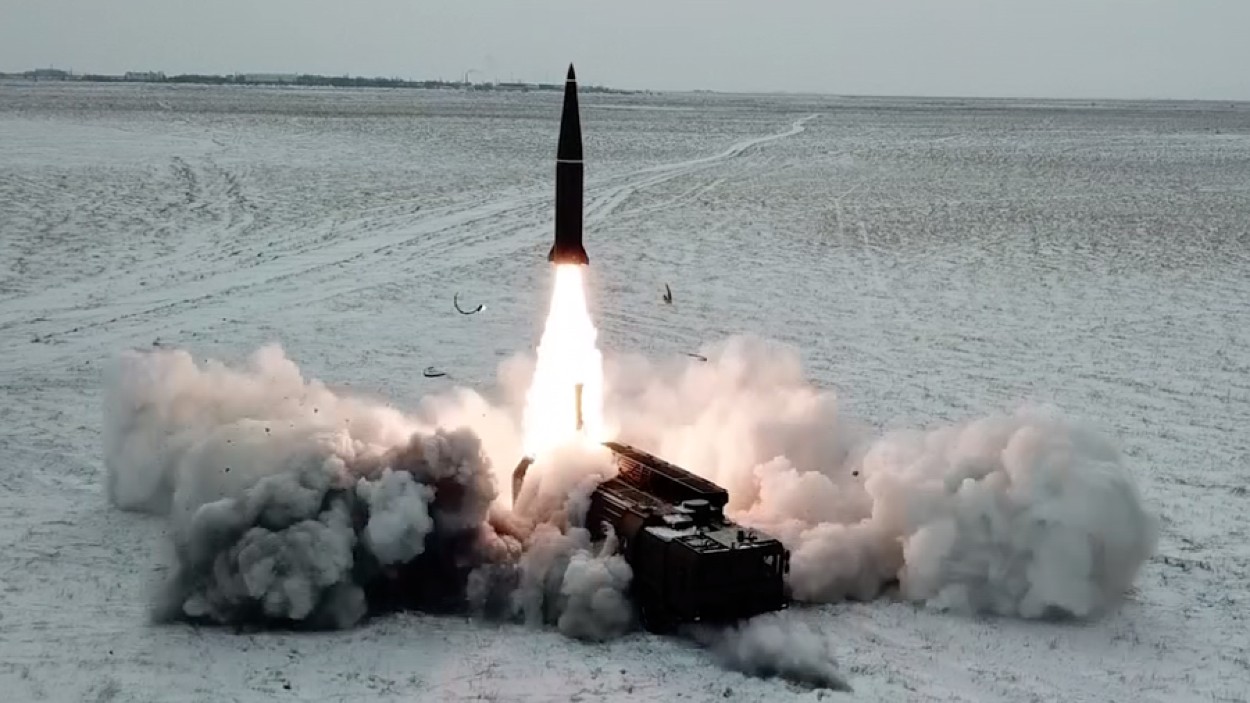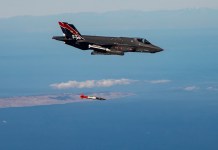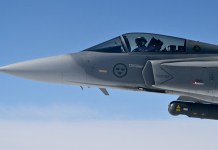On the night of June 9 to 10, Russia carried out a maximum force missile attack on Mirgorod Air Base in Poltava Oblast, home to the 40th Tactical Aviation Brigade flying MiG-29 fighters.
Russia’s ‘New Age’ Aerial Warfare Blunts Ukrainian Counteroffensive; Russian Tech Batters Western Tech!
Captured US Stealth Drone, Reversed-Engineered By Iran, Could Help Russia In Gaining Air Superiority Over Ukraine
According to a Ukrainian Air Force press statement, Russia struck the base with Iskander-M (ballistic) and Iskander-K (cruise missiles), and Geran-2 drones.
Russia reportedly launched a total of 8 ground-based missiles and 35 Geran-2 drones from the area of the eastern coast of the Sea of Azov. Some of the missiles and drones were directed at targets in Odesa and Kharkiv regions.
Poltava Oblast Head Dmytro Lunin noted that the strike damaged airfield infrastructure and other unspecified equipment.
According to Military Informant, NASA satellites recorded two powerful explosions at 3:39 a.m. on the territory of the Mirgorod airbase. Going by the layout of the airbase and the coordinates of the explosions in satellite photos, it appears that underground fuel and ammunition storage facilities were struck.

Russia uses its Iskander missiles when it needs to strike a target hard and with certainty. The Iskander-M is a quasi-ballistic missile that keeps changing trajectory. In addition, it reaches hypersonic velocity during the terminal phase of its trajectory.
As such, the missile cannot be intercepted, and it has great penetration and destructive power, which makes it eminently suited for destroying underground storage facilities.
The Iskander-K is a low-observable cruise missile that is accurate and difficult to intercept. However, its slower speed makes it suitable for attacking surface targets.
Counter Air Operations
Russia’s strike on the Poltava air base was aimed at limiting the ability of the Ukrainian Air Force (UAF) MiG-29 fighter aircraft to mount strikes against Russian forces. Such strikes are referred to as Counter Air Strikes.
The UAF uses MiG-29 fighters to strike Russian air defense (AD) radars with HARM missiles and possibly to strike Russian command and control centers with JDAM-ER glide bombs.
In the past, the UAF has successfully coordinated MiG-29 HARM strikes with Su-24MR Storm Shadow strikes. The HARM missile destroys any Russian AD unit attempting to intercept Storm Shadow missiles.
Russia’s strike on the Poltava air base was the third counter-air strike. It earlier struck two UAF air bases used by Su-24MR fighter bombers, the launch platforms for British Storm Shadow missiles
Strike On Kanatove Reserve Air Base
On the night of June 4, Russian missiles struck the Kanatove reserve air base near Kirovograd.
Reporting on the strike, the Russian Ministry of Defence (RuMoD) stated, “The Russian Armed Forces launched a long-range air-based high-precision weaponry strike against the enemy targets at the military airfields. The goal of the attack has been reached. The command posts, radar stations, Ukrainian aviation equipment, as well as ammunition depots, have been hit.”
The Ukrainian AF reported – “From 01:00 a.m. to 04:00 a.m. on June 4, 2023, Russian forces used five Geran-2 drones from the Bryansk region, as well as six Kh-101/Kh-555 air-based cruise missiles – fired from six strategic Tu- 95 ms from the Caspian region.”
Yuriy Ignat, spokesperson for the Ukrainian Air Force, stated that 2 Russian missiles hit the airfield.
Russian military bloggers reported that two UAF Su-24MR bombers used to launch British Storm Shadow missiles and an administrative building were destroyed.
Strike On Starokostiantyniv Air Base In The Khmelnytsky Region
On May 29, 2023, Russia struck the Starokostiantyniv Air Base in the Khmelnytsky region, the home base of Su-24MR fighter bombers.
According to official Ukrainian sources, 5 aircraft and a fuel & ammunition depot were put out of action, and the runway was seriously damaged. Following the attack on Starokostiantyniv and Kanatove, Ukraine’s Storm Shadow attacks reduced noticeably.
UAF Poised For Offensive Strikes
Ukrainian forces have been attempting to breach Russian defensive lines with armor-supported infantry probes for over a week now.
So far, they have not met with success. However, given the number of troops and sophisticated weapon systems at Ukrainian disposal, it is likely that Ukrainian forces will eventually break through a weak point in Russian defenses and attempt to establish a stable beachhead across Russian defensive positions.
If that happens, Ukraine will commit to battle its main strike force, which it has held back so far.
That would be the time for the UAF to step in and relentlessly attack Russian ground lines of communication (GLOC) with JDAM-ER bombs and Storm Shadow and HARM missiles. Ukraine’s aim would be to isolate Russian forces opposing its offensive thrust from their supplies and throw them in disarray.
Current Russian counter-air operations are aimed at limiting the ability of the UAF to support the counteroffensive in case of a Ukrainian breakthrough.

Striking Runways
It’s interesting to note that Russia is not striking the runways, at least not intentionally, at Ukrainian air bases. Indeed, both Western and Russian military bloggers sometimes derisively comment on Russia’s inability to put out of operation the runways at Ukrainian air bases.
The fact is, after most strikes, runways are made operational again in less time than the time taken by the adversary to plan and execute a runway strike, thanks to rapid setting cement!
Modern counter-air operations are most effective when a strike is aimed at destroying ammunition and fuel storage, Without fuel or ammunition storage, an adversary’s ability to mount air strikes gets constrained.
Conclusion
With Ukrainian forces already positioned close to the battlefront, Russian forces have shifted focus from interdicting supply lines through strikes deep into Ukraine’s interior to counter air operations aimed at debilitating UAF’s strike capability.
However, for counter-air strikes to be truly effective, they have to be sustained. Russia will have to attack Ukrainian air bases almost daily to ensure that the UAF is not able to join the battle with the ground forces.
The big question is – does Russia have the missile stocks to sustain the attacks over the next 15 days or so?
- Vijainder K Thakur is a retired IAF Jaguar pilot. He is also an author, software architect, entrepreneur, and military analyst. VIEWS PERSONAL
- Follow the author @vkthakur




